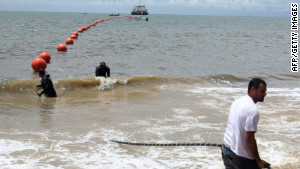As with all song analysis, we'll look at the song form, the arrangement, the sound and the production.
The Song
"Lights" has a slightly unusual form in the there's both a verse B section and a chorus B section. The form looks like this:
Intro, verse, B section, chorus, chorus B section, verse, B section, chorus, chorus B section,
Bridge, Chorus (no vocals), chorus, chorus B section, outro, intro
What happens is that the chorus hook comes back in after the chorus B section, which makes the chorus a lot longer than normal.
The bridge is also interesting in that it's instrumental, followed by an instrumental first half of the chorus. This is a way to add both length and interest to the song.
The song has a pretty strong melody in every section, and, which is unusual for a pop song these days, and it differs considerably from section to section.
The lyrics paint an abstract picture which isn't to easy to understand, but the rhymes don't seem forced, even though the content may be a little thin.
The Arrangement
Like most hits, the arrangement for "Lights" is based around each section changing both instrument-wise and dynamically.
The song begins with an arpeggiated synth by itself, then joined on the verse by the lead vocal. There are no additional instruments until the chorus, when both a synth bass and a high pad enter along with doubled male and lead vocals. The kick drum enters on the chorus B section.
On the second verse the song breaks down again to the arpeggiated synth, but programmed drums and a strumming guitar are added as well. The 2nd B section also includes a high harmony of the meloldy line. The second chorus has the drums continue playing (unlike the first chorus) and an additional synth pad is added.
The bridge is another breakdown back to the drums and arpeggiated synth, but a cello-like synth plays the melody, which all ends in a record-like slowdown. The chorus then begins with the same instrumentation as the 2nd chorus, with the addition of a tom fill and the vocals singing only "Lights," which ends in another slowdown.
The 3rd chorus then continues with the same instrumentation including the tom fills. The outro is over the chorus chord pattern with the same instruments, but the background vocals again sing "Lights." The lead vocal ad libs, and on the 3rd time through the pattern the chord changes go up instead of down. The song ends just as it began, with the lone arpeggiated synth.
The arrangement elements look like this:
* The Foundation: programmed drums, synth bass
* The Rhythm: arpeggiated synth and rhythm guitar on verses
* The Pad: low and very high synths in the choruses and bridge
*The Lead: vocal
* The Fills: vocal answers
The Sound
Unlike so many pop songs these days, the sound of "Lights" is pretty clean with little distortion. There are no overt ambiences, except for the many delays that occurs on the vocals and the ping pong delay on the arpeggiated synth. The vocal is very breathy and in your face during the first verse, and although it's compressed, doesn't feel squashed. All in all, it's a really good sounding recording.
The Production
Like most hits, it's the many little things that sometime make a production. Listen to the delays on the lead vocal that occur on only one side of the soundfield. Listen to the doubled lead vocals in the vocals that are spread left and right, as well as the low male vocals. Listen to the toms in the last chorus as they push the song along as does the rhythm guitar in the verse. Check out the stutter edits on the vocal on the outro. Listen to how the song builds in the chorus, then breathes a bit with fewer instruments during the verse. These are the things that keep a song interesting, an element that is vital in all hits.
----------------------------------
You should follow me on Twitter for daily news and updates on production and the music business.
Don't forget to check out my Music 3.0 blog for tips and tricks on navigating social media and the new music business.



